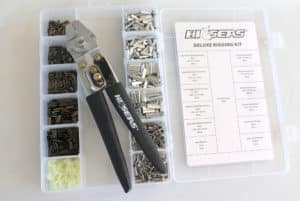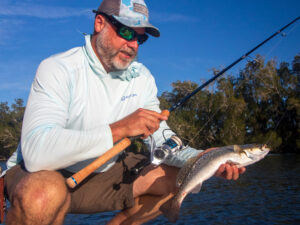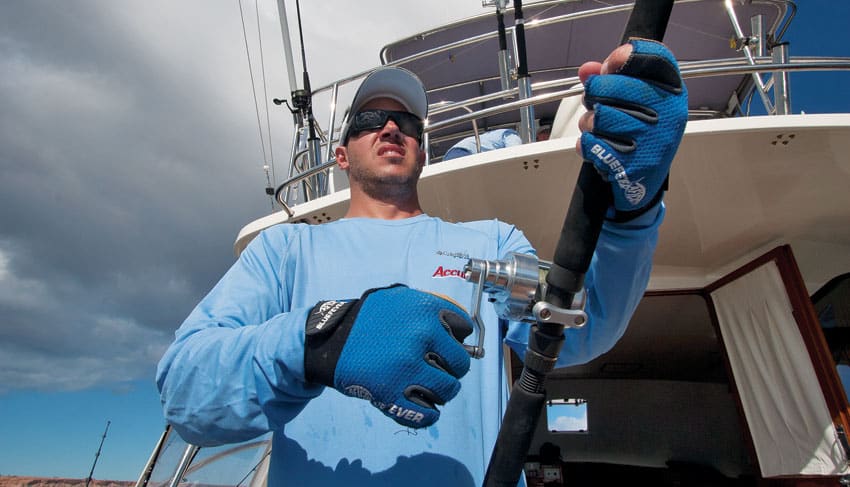
As the sales manager at AFTCO, Greg Stotesbury has heard plenty of stories of the dangers associated with not adequately protecting your hands with fishing gloves when fishing. Unfortunately, one story hits close to home.
Stotesbury’s father was fishing off San Diego several years ago with his wife, who had hooked into a big striped marlin. As the fish began tiring boat-side, Stotesbury put on a pair of orange mesh gloves and began wiring the fish.
“Just then, it bolted under the boat,” recalls the younger Stotesbury. “The leader tightened around his index and ring finger, and cut them clean off. It happened so fast, he didn’t have time to react … and those old gloves just weren’t up to the task.”
Here’s the reality of saltwater fishing: It can be a dangerous game sometimes. Whether wiring big pelagics, handling abrasive gear or simply spending too much time under a damaging sun, anglers must properly protect their hands.
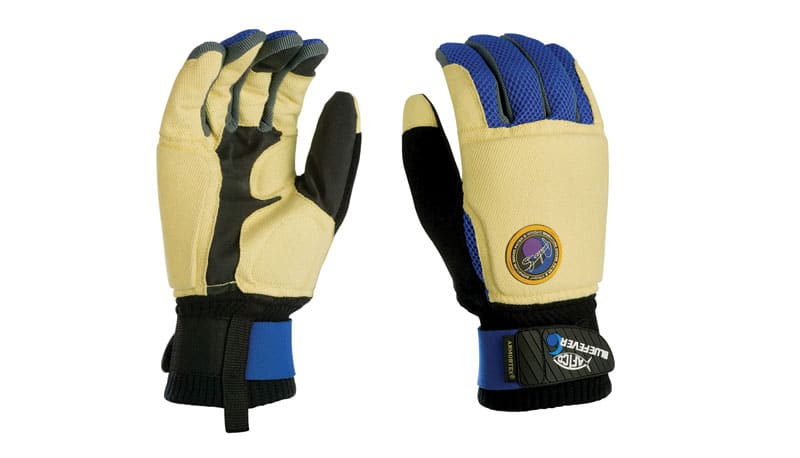
Preparing for Battle
We’ve all seen — and probably used — the orange mesh gloves Stotesbury described. While these gloves might provide a certain level of protection, they are wholly inadequate when it comes to heavy-duty offshore work.
No one knows more about this subject than Charles Perry. Generally recognized as the top wireman on the planet, Perry has been pulling on huge tunas and marlin from Australia to Madeira and everywhere in between for decades.
“The basic idea,” he says, “is that whatever size leader you’re using, you use fishing gloves that protect your hands but still offer as much feel as possible.”
Big fish and 400-pound leaders? Use heavily padded gloves that allow you to apply the proper amount of pressure needed to turn and lift a big fish, Perry says. Wiring sailfish on a light leader? Scale down the gloves so you can “feel” your quarry, react to its surges and avoid break-offs.
Luckily, anglers can find several good options. While in the old days Perry would battle marlin with custom-made “leather fireplace gloves with padding in the palm’s heel,” companies such as AFTCO now offer manufactured gloves designed to protect hands in the same fashion.
AFTCO actually consulted Perry when designing its Bluefever Wiremax gloves, which are made with closed-cell EVA foam and Kevlar coating to offer protection against the biggest fish. The company’s Release gloves have less padding and are “more of a tactile glove for wiring sailfish, striped and white marlin,” says Stotesbury.
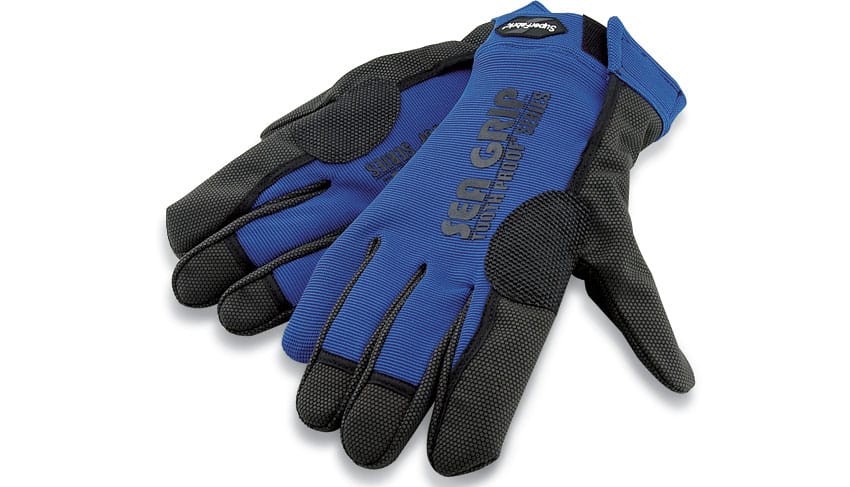
Fighting, Gaffing and Fileting
While wiring a massive fish is likely the most intense test you’ll ever put your hands through when fishing, it’s not the only one. Fighting a big fish with rod and reel can be similarly hard on an angler, especially in an unforgiving offshore environment.
Consider first that your hands will likely become wet with sweat or seawater, which causes slippage, pruning and a greater susceptibility to cuts. Then there’s the fact that a rocking boat often leads to banged knuckles on heavy gear. And, of course, if you’re latched onto a true beast, you’ll be working hard for an extended period of time, which always leads to hand cramps and blistering.
Bottom line: A good pair of gloves makes doing battle much easier and much more comfortable.
Perry spent many years fishing with legendary big-game angler Stewart Campbell, and he recalls that Campbell generally wore a glove on his right hand (his cranking hand) when working on record-class fish with conventional gear.
“And quite often when he was light-tackle fishing, sometimes it would involve long fights, and you’d often have to wind very quickly if the fish was coming at you or we were running it down,” he adds. “So gloves were always good there too. But you want them to be light gloves, first and foremost. You just want to prevent blistering.”
A snug fit and tacky grip will accomplish that goal, and AFTCO, Pelagic, Hi-Seas and Buff offer a number of models from which to choose: some are full-fingered, while others expose the fingers to facilitate easier knot tying.
These same gloves can also be used effectively and safely when gaffing a fish or filleting a fish back at the dock.
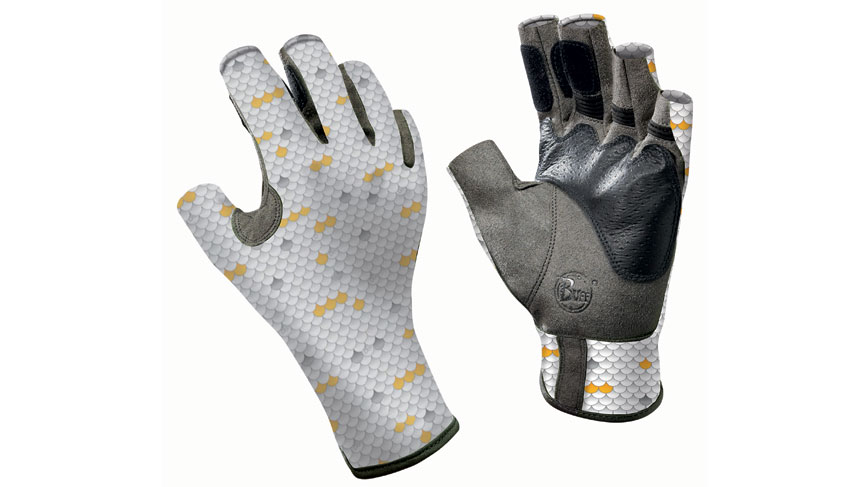
Protection from the Sun
But hands are susceptible to more than just the rigors of big-game fishing. There’s another invisible (and perhaps more dangerous) hazard that anglers face — the sun’s UV rays.
The backs of hands rank as one of the most susceptible areas for developing skin cancer, and while sunscreen is a good deterrent, it’s not nearly enough. Increasingly, anglers are taking measures to cover up, both when plying the offshore waters as well as stalking inshore haunts.
While Buff’s Angler and Fighting/Work gloves were designed primarily to provide hand protection from zipping fly lines and rough-textured push poles, they also offer a UPF-50 rating, adding extra protection against the sun’s ultraviolet rays.
Similarly, Rich Hohne, marketing manager at Simms Fishing Products, says that the company’s SunGloves have taken off in popularity in South Florida, primarily among inshore anglers who are as concerned about sun damage as anything.
“The flats guys have really gravitated to them,” Hohne says, “and the gloves just received the seal of recommendation from the Skin Cancer Foundation. That’s a really big deal for us, and we’re trying to get this designation on 90 percent of our line.”
No, these gloves won’t prevent a finger from being taken off. But when it comes to protecting our hands, it’s important to be aware of all the potential dangers on the water.


